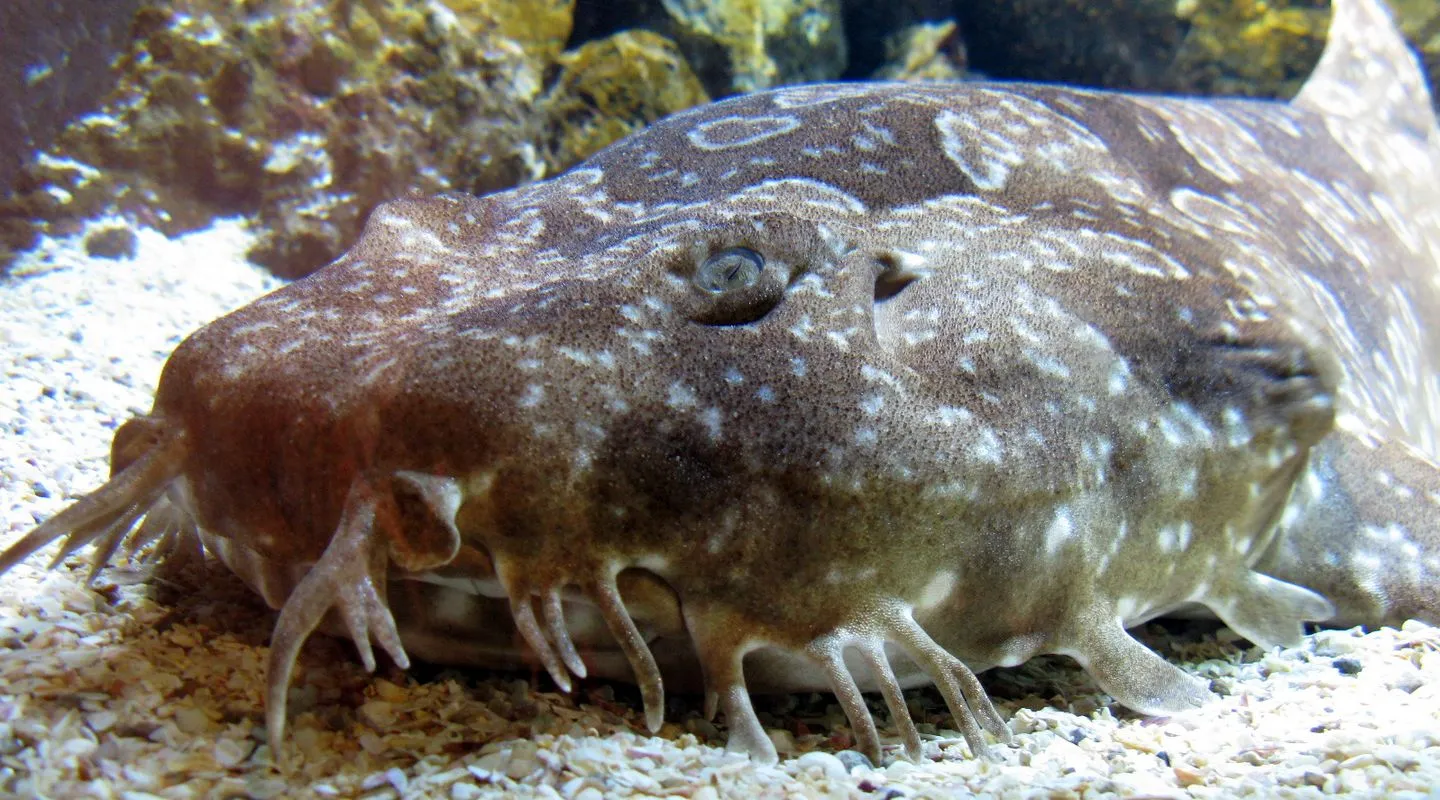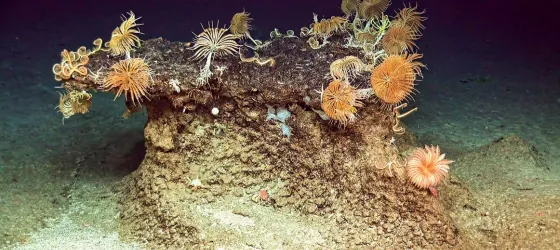Despite their large mouth, western wobbegongs can be susceptible to digestive bloating when in an aquarium. Their keepers are therefore careful to give them small pieces of fish so they can digest them more easily.
Where is the animal to be found?
It spends most of its time resting on the sea floor. Its flat body provides camouflage against the seabed.
The Western wobbegong is a bottom-dweller from the western and southern continental shelf of Australia, living at depths of 79 metres and no more than 106 metres from the seabed.
These fish inhabit all kinds of sandy, rocky and coral areas around the coast down to a depth of about 100 m. They have even been spotted climbing on the ridges of tidal pools. They are mainly active at night, feeding on bottom-dwelling invertebrates such as crab, lobster, octopus and fish.
How can it be recognised?
At birth, juveniles measure between 22 and 26 cm. As adults, they can grow up to 1.50 m long.
These fish are well camouflaged and have a relatively flat morphology which distinguishes them from other shark species. They are a yellow-brown colour with dark spots. They have appendages around their heads in the shape of a kelp to provide extra camouflage.
What is distinctive about it?
Western wobbegongs are ovoviviparous, meaning their eggs hatch inside the female’s body. The female reproduces every 2-3 years and can give birth to between 18 and 29 young following a gestation period of 9 to 11 months.
Threat and protective measure
They are a bycatch of commercial fishing aimed at sharks.











